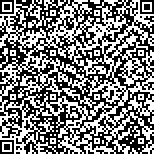下载中心
优秀审稿专家
优秀论文
相关链接
摘要

油气藏烃类微渗漏所造成的热异常信息,是油气遥感勘探中最直接和最具普遍意义的标志,对该标志的识别和时效性的研究,具有广泛的实践意义,并可以发挥出巨大的经济效益。在中国内蒙古二连盆地已知油田上方,选择了勘探开发前期二个时相和勘探开发后期一个时相的遥感数据与该区油气化探数据进行定性和定量的复合分析,指出了热红外遥感找油的最佳时机。
Thermal remote sensing oil-gas exploration is based on the theory on hydrocarbon micro-seepage over oil-gas field. Hydrocarbon moves upward along cracks and fractures in the form of micro-hydrocarbon from oil-gas field and interacts with surrounding material,resulting in round-like hydrocarbon alteration area and a series of indicators on surface and subsurface concerned. Remote sensing data in the range of infra-red band(8—14μm)can be used to attract the information of thermal anomaly because hydrocarbon that reaches the surface and subsurface causes changes of physical and chemical properties of surface material,such as reduction of thermal conductivity and increase of thermal capacity,or production of oxidant heat. The thermal anomaly over oil-gas field caused by hydrocartbon micro-seepage is the most direct and significant criteria for oil-gas remote sensing exploration. It is of great practical and economic significances to identify these criteria and study their temporal effectiveness. It has been revealed by the authors in the former research that Oil-gas Thermal Infra-red Remote Sensing Exploration is more effective in a new site for oil-gas-exploration,where the surface condition of hydrocarbon alteration area is well reserved, than the explored oil-gas field where the surface condition of hydrocarbon alteration area was seriously destroyed. In order to compare the effectiveness of remote sensing data acquired before or at the beginning of and after oil-gas exploration,two sample areas has been chosen over the known oil fields in Erlian Basin of Inner-Mongolia and a set of NOAA data of two dates and of one date,which represent the data respectively taken at the beginning of oil-gas exploration and at the end of the exploration. An integrated analysis has been carried out by overlaying remote sensing data in the studied areas with data of geo-chemical exploration. It was shown that the use of remote sensing data taken before or at the beginning of oil-gas exploration,integrated with other information sources,could receive best economic benefit when thermal infra-red remote sensing is used for oil-gas exploration. This is applicable for not only a new exploration site but also a continuing exploration of the old oil-gas field.

